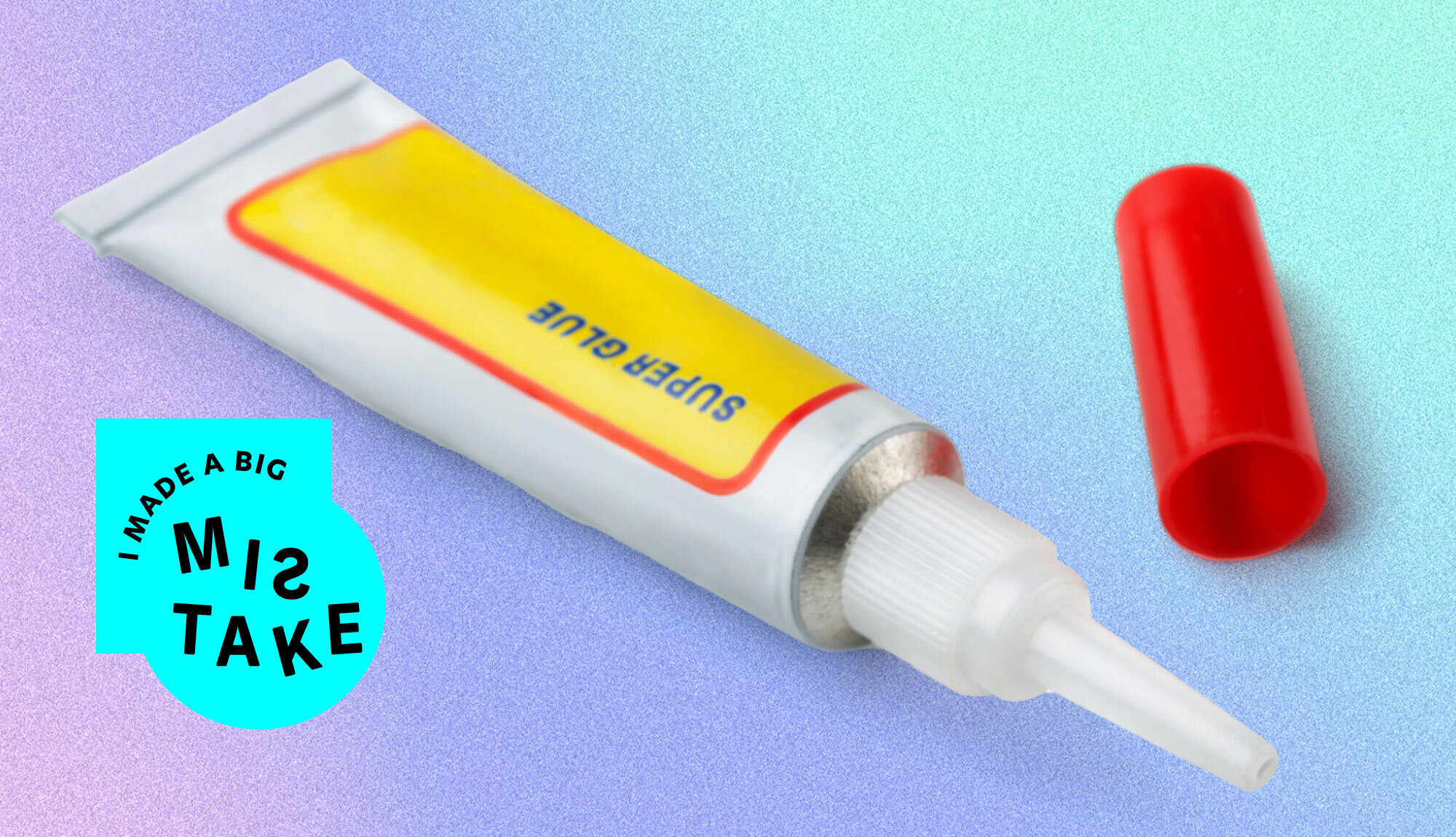

In the series I Made a Big Mistake, PopSci explores mishaps and misunderstandings, in all their shame and glory.
Super Glue is a fascinating substance. A strong, quick-drying adhesive, it is useful enough to keep around the house as a handy tool, and so easy to use (and misuse) that it’s a regular source of trips to the emergency room. One such study highlights “patient carelessness” as responsible for nearly 80 percent of the cases involved, with “childhood curiosity and lack of parental supervision” clocking in at another 11 percent. The history of Super Glue’s creation is as wild as that of the stories that ER doctors could tell each other over drinks, and it starts in 1942, with an attempt to improve the accuracy of weapons.
Super Glue was twice invented by Harry Coover. The first time, he was working at Eastman Kodak on military research. Eastman Kodak is best known today as a film manufacturer, one whose present survival came thanks to a bailout from Hollywood film studios. As a side note, director Christopher Nolan, whose 2023 film Oppenheimer covers the most famous military research project of all time, was one of the leading forces behind Kodak’s rescue, emphasizing the specific qualities of the film.
In the 1940s, Eastman Kodak could point to decades of work in military technology. Its researchers, engineers, and technicians had designed gunsight lenses for fighter planes in World War I. Before World War I, the best-quality optical glass came from Germany, and other nations regarded its creation as a trade secret, leading the US to engineer its industry on its own. In 1942, Coover was continuing in that line of research, looking to design a new gunsight made of clear plastic. Plastic had the promise of making for a lighter sight, and one that could be made at scale if the right compound was found.
Coover did not, in 1942, discover a better gunsight material. Instead, he had found a problem.
Sticky situation
What would become known as Super Glue was a cyanoacrylate, and the first impression was that it was worthless for the problem Coover was looking to solve.
“I was working with some acrylate monomers that showed promise,” Coover recalled for Popular Science in the February 1989 issue. “But everything they touched stuck to everything else. It was a severe pain.”
Coover and colleagues were looking for a straightforwardly useful material. Cyanoacrylate presented only problems, and throughout World War II, Eastman Kodak would make its gunsight lenses in the tens of thousands out of glass.
[Related: Raytheon asks retirees for help making new Stinger anti-air missiles]
It would take the post-war world, and a move to Tennessee, for Coover to stumble on Super Glue a second time, and realize its unique value. In 1951, Coover’s job was moved to Kingsport, Tennessee, where he was assigned a team of chemists.
“He had been overseeing the work of a group of Kodak chemists who were researching heat-resistant polymers for jet airplane canopies. They tested cyanoacrylate monomers, and this time, Coover realized these sticky adhesives had unique properties in that they required no heat or pressure to bond. He and his team tried the substance on various items in the lab, and each time, the items became permanently bonded together,” notes an MIT profile of Coover.
In 1954, after this second discovery of Super Glue, Coover filed a patent for “Alcohol-catalyzed alpha-cyanoacrylate adhesive compositions.” This facilitated the commercialization of the discovery, as Eastman 910 industrial adhesive, in 1958.
Because glue forms a polymer where it contacts water, it can be used to seep into and seal small cracks and pores on the surfaces it is connecting, creating a powerful, tight bond. Under normal conditions, continued Coover in 1989 in Popular Science, “all surfaces have at least a monomolecular layer of water on them. It’s actually the water, or any weak base, that is the catalyst causing the polymerization.”
Coover once demonstrated this to comedic effect on a gameshow, where he demonstrated Super Glue’s strength by binding two pieces of metal together, and then holding on to one as it was lifted into the air. Show host Garry Moore jumped on as well, and still the glue held the metal together, enough for the men to both be lifted up.
All patched up
Coover’s invention seems like it should follow a straightforward trajectory as a happy accident of military research, finding postwar use instead. What makes Super Glue remarkable is that it ended up on the battlefield anyway.
[Related: Super Glue could make it easier to recycle plastic]
In 1964, Eastman Kodak submitted an application to the FDA that Super Glue be considered for wound sealing. It would take years for a variation of the glue to be formally certified, but during the Vietnam War, the glue was reportedly used as a way to seal wounds and cuts, at least until better medical attention could be found. Today, specific medical variants exist.
Skin adhesives specifically formulated for the task are a regular tool in hospitals, and while the Mayo Clinic doesn’t encourage the use of Super Glue as a way to treat small cuts and wounds, it acknowledges that it has been successfully used as such. So let that fact stick in your brain, and proceed at your own risk when using the substance.
